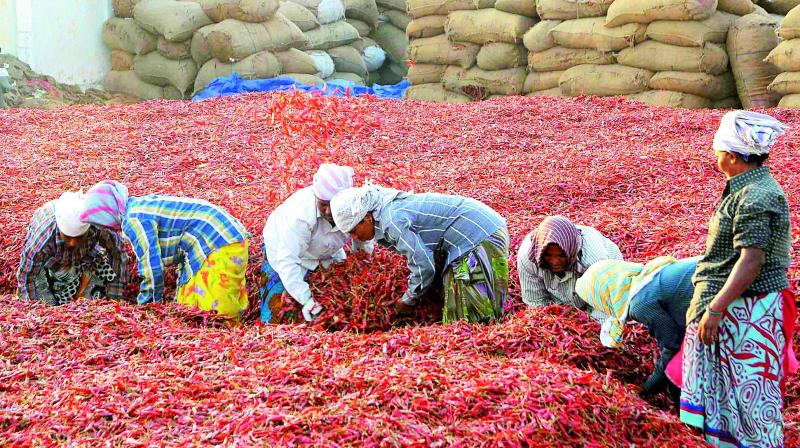Chilli farmers get DNA help

Hyderabad: Scientists at the Centre for DNA Fingerprinting and Diagnostics (CDFD) achieved a breakthrough in the genomic sequencing of a species of fungus that causes disease in chilli crops. The disease results in losses amounting to hundreds of crores every year, particularly in Andhra Pradesh and Telangana. The sequencing efforts are believed to be paving the way for the design of an efficient disease control regime.
Colletotrichum truncatum is a major fungal phytopathogen which causes anthracnose disease in chilli crops of the Capsicum annum species, thus resulting in major economic losses in India and in other tropical and subtropical countries.
So far, not much has been known about the pathogenicity of C. truncatum. The results of the study conducted by N. Madhusudan Reddy and Soumya Rao from the CDFD have been published in the latest volume of the Plos One journal.
The researchers, in their paper, say, “A high-quality whole genome sequence and gene annotation based on transcription data of an Indian isolate of C. truncatum has been obtained. Analysis of its genome sequence has revealed information regarding pathogenicity-causing genes which encode secreted proteins, effectors, and plant cell wall-degrading enzymes. The size of genome assembly, the number of predicted genes and some of their functional categories are similar to other sequenced colleto-trichum species. A comparative genomic analysis with related species of fungi has identified some unique genes. This is an important genomic resource to understand the biology and the life cycle of the phytopathogen. It will pave the way for new disease control methods.”
According to the Department of Agriculture Cooperation and Farmers Welfare, India produced around 1520 million tonnes of dried chilli and 2955 million tonnes of green chilli in 2015-16.
Mr Mannava Subba Rao, the Chairman of the Guntur Chilli Yard, says, “In the Guntur area, which is famous for its chillies, the average production is 20 quintals per acre. Due to the type of soil found here and the varieties of chilli grown, production is on par with other countries. If the fungus affects the crop for only about a week or ten days, it does not cause much damage. However, a prolonged fungal attack can result in the loss of two quintals per acre and yield of lower quality. The product turns into third-grade white chillies, which are not suitable for export, and whose price is drastically less. Any new disease management methods developed through genome sequencing will help.”

